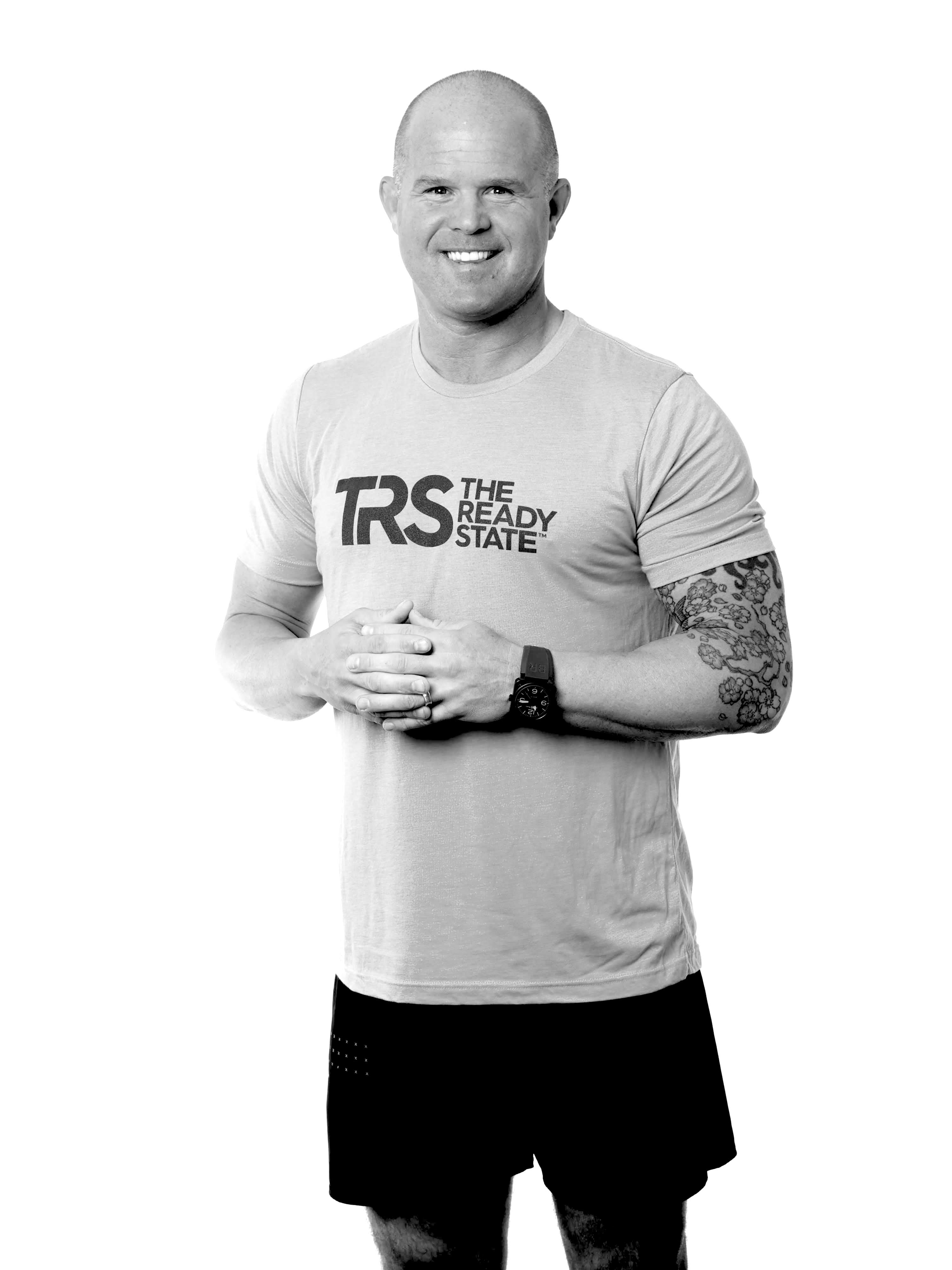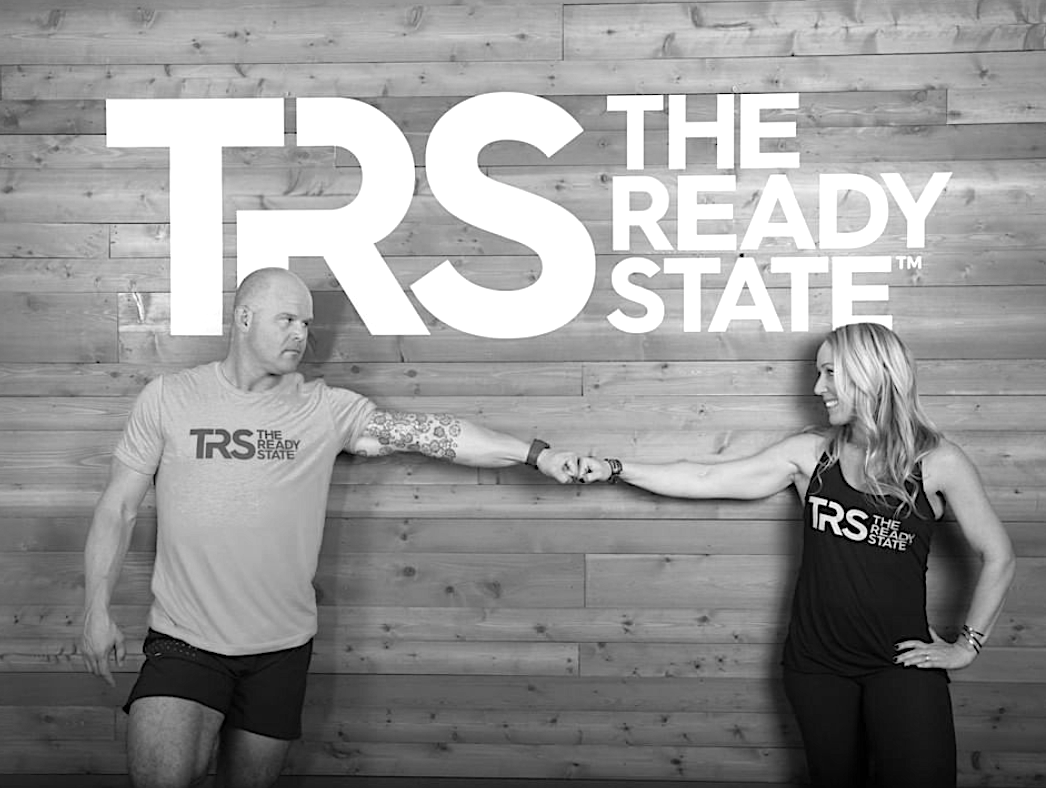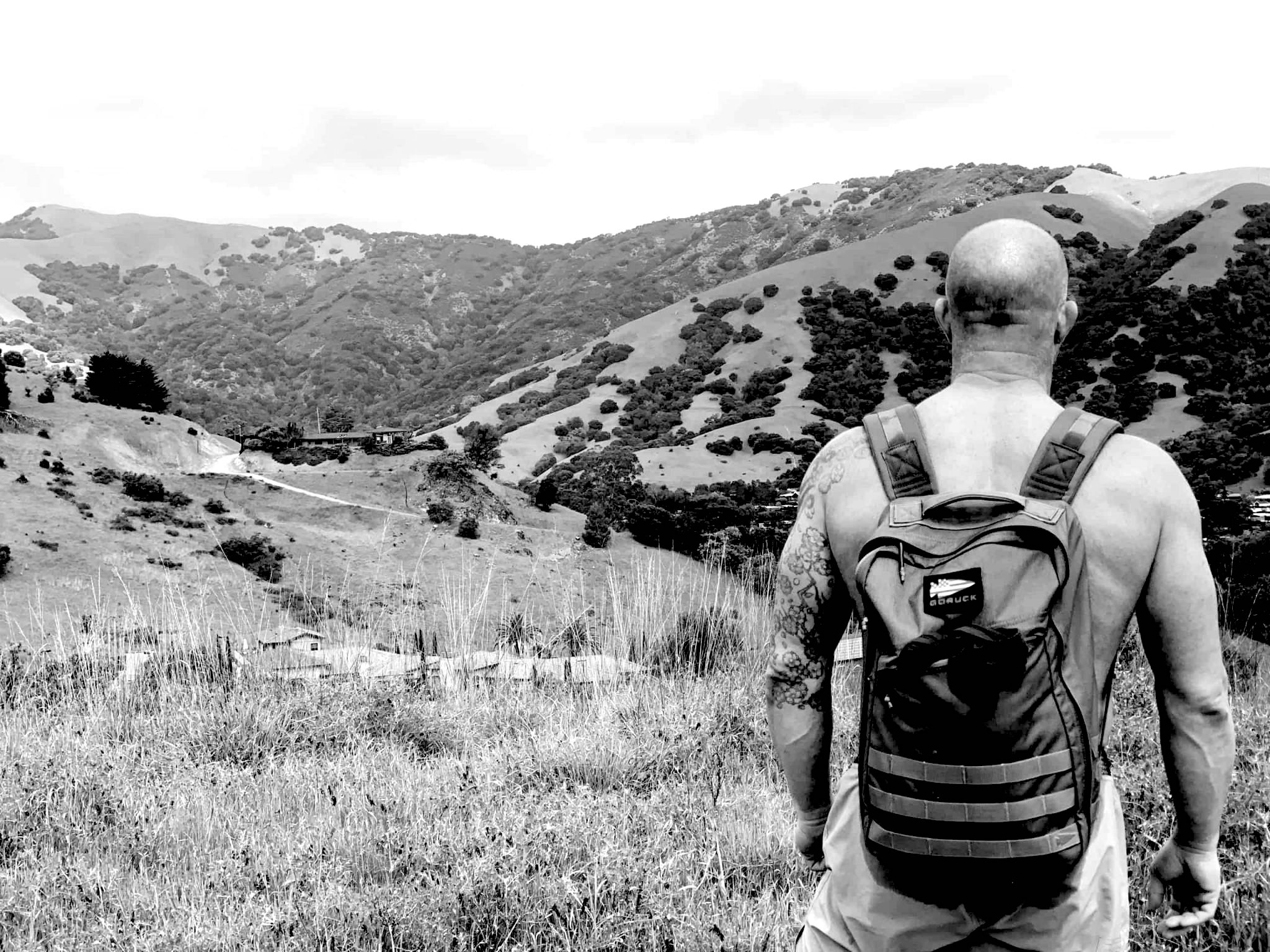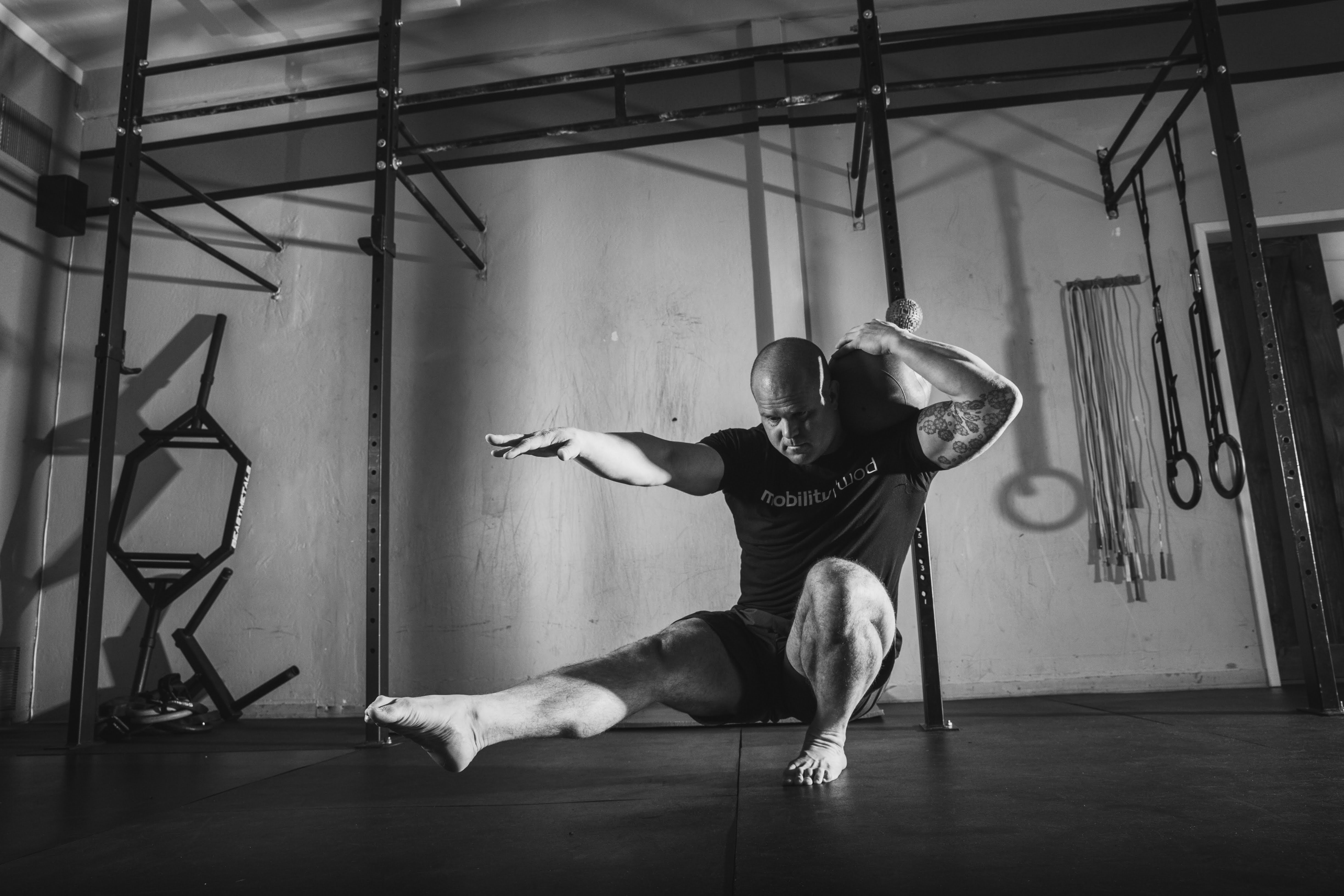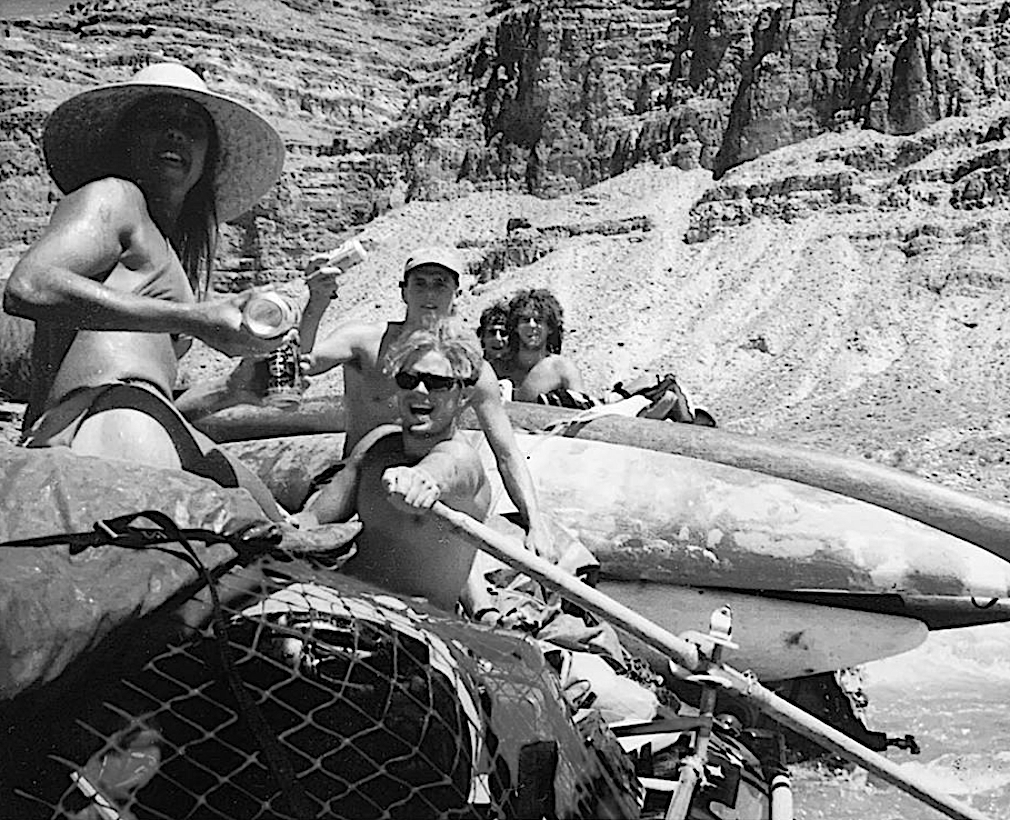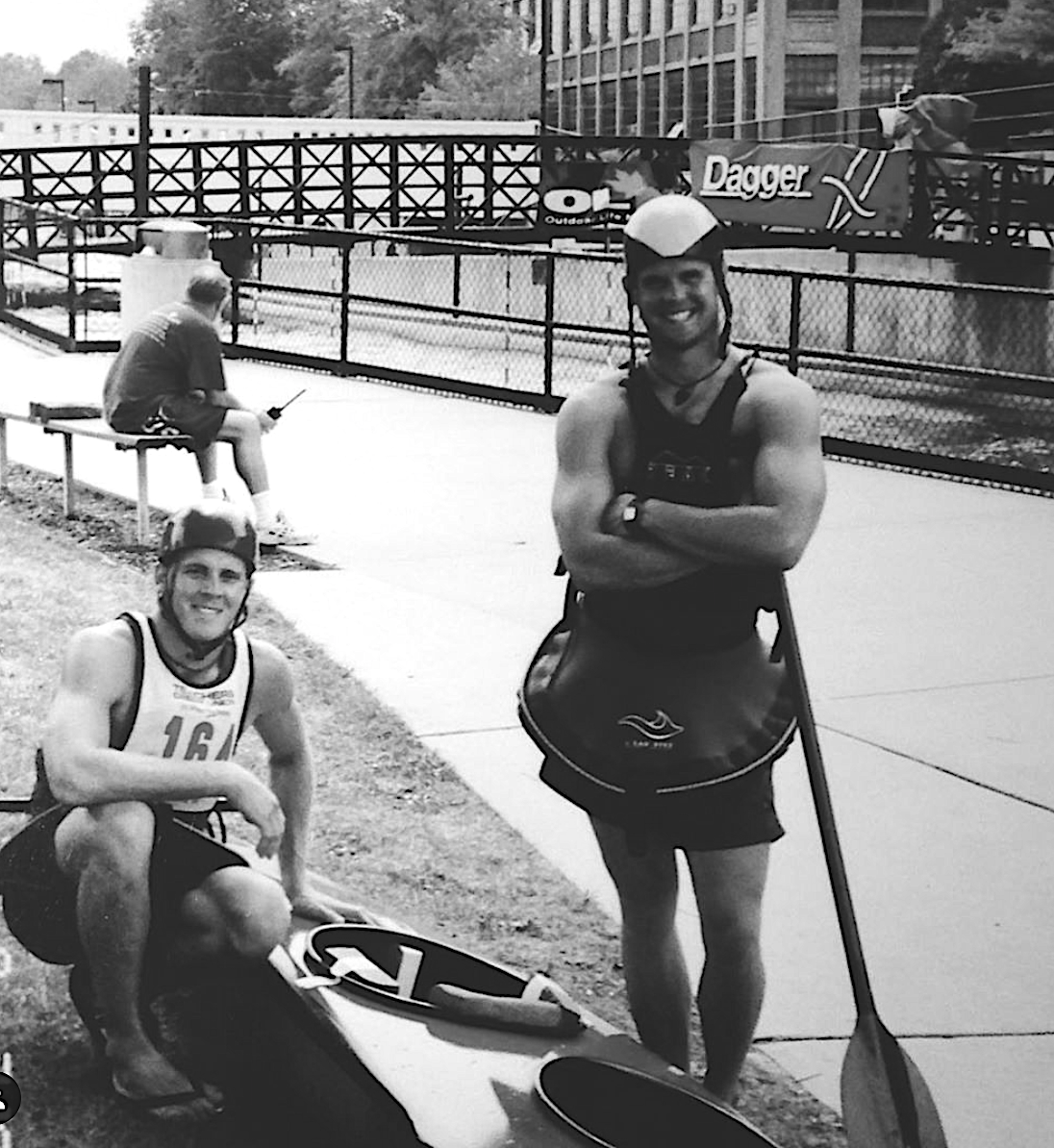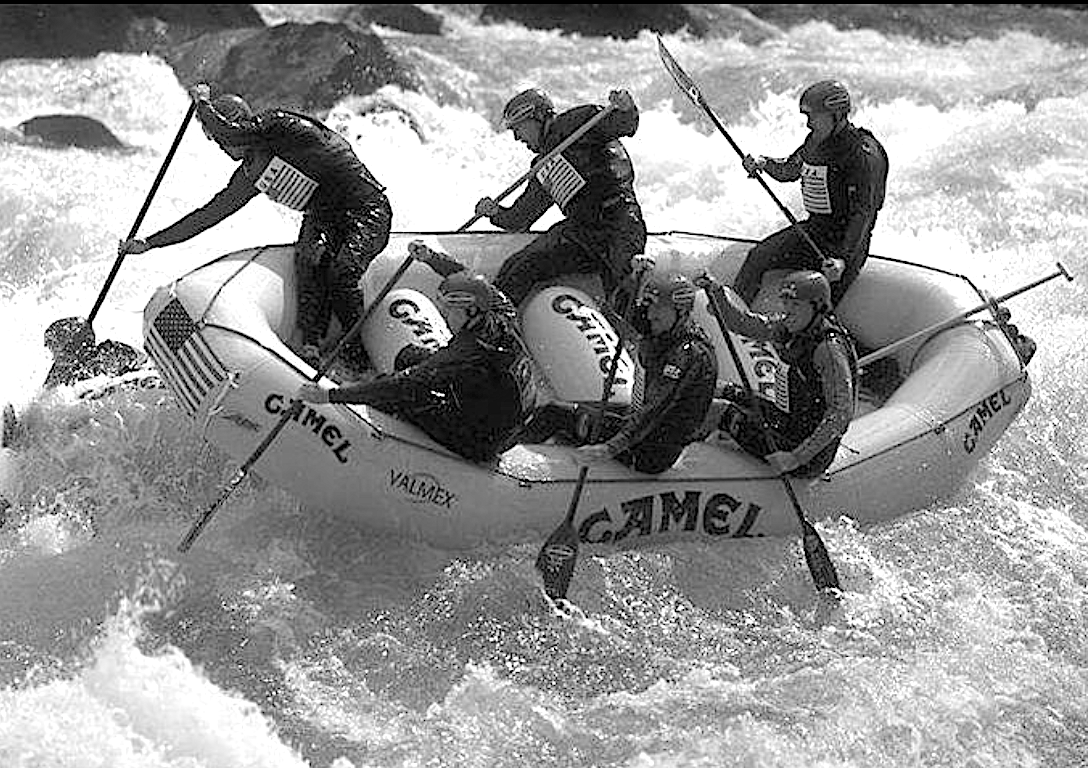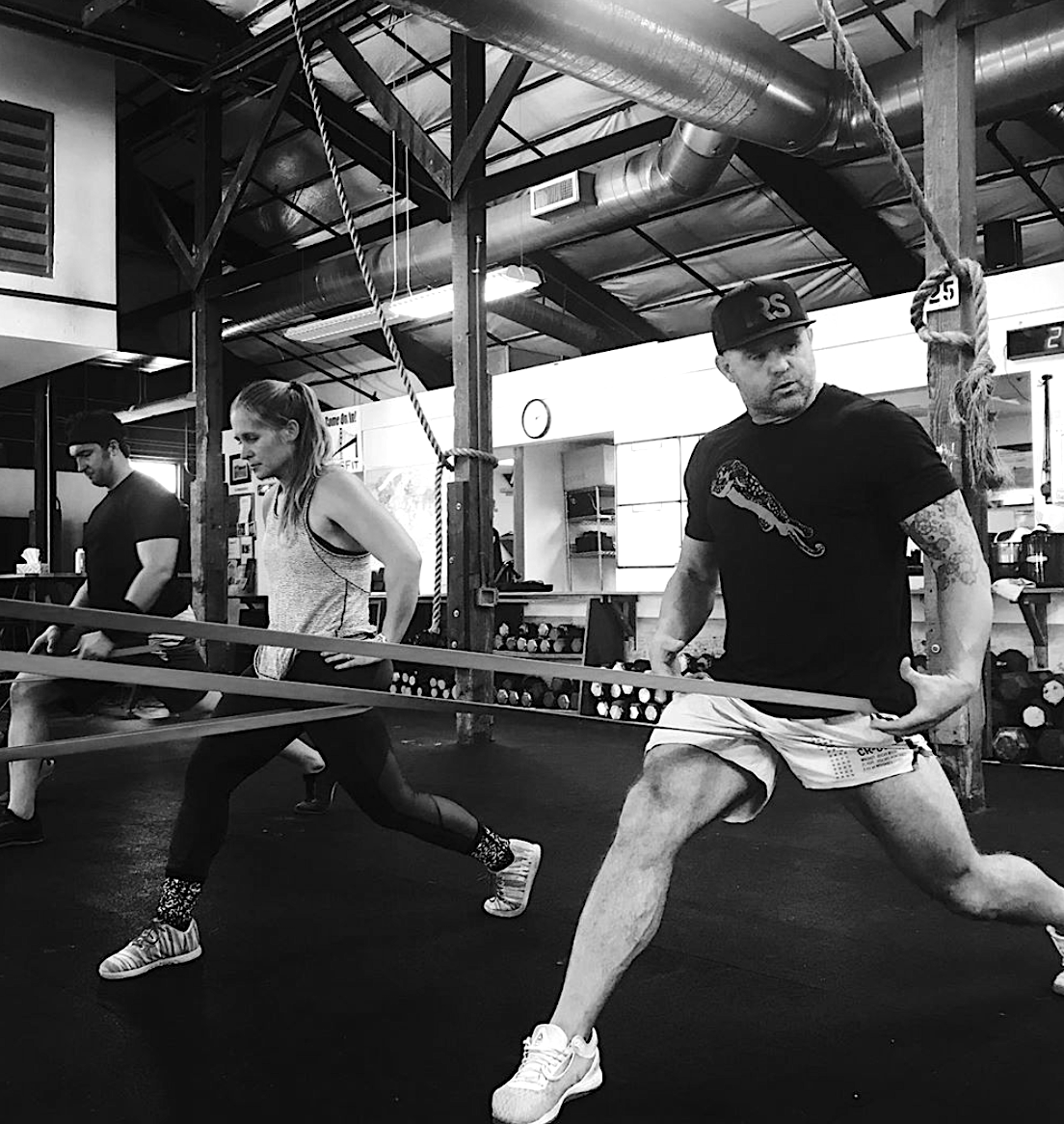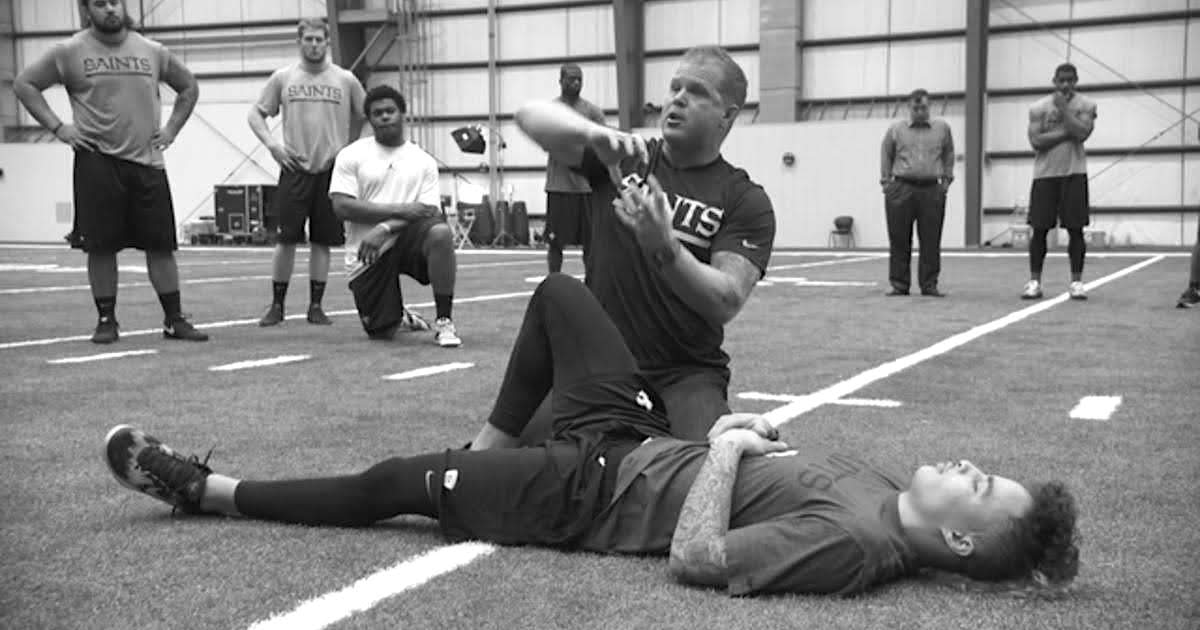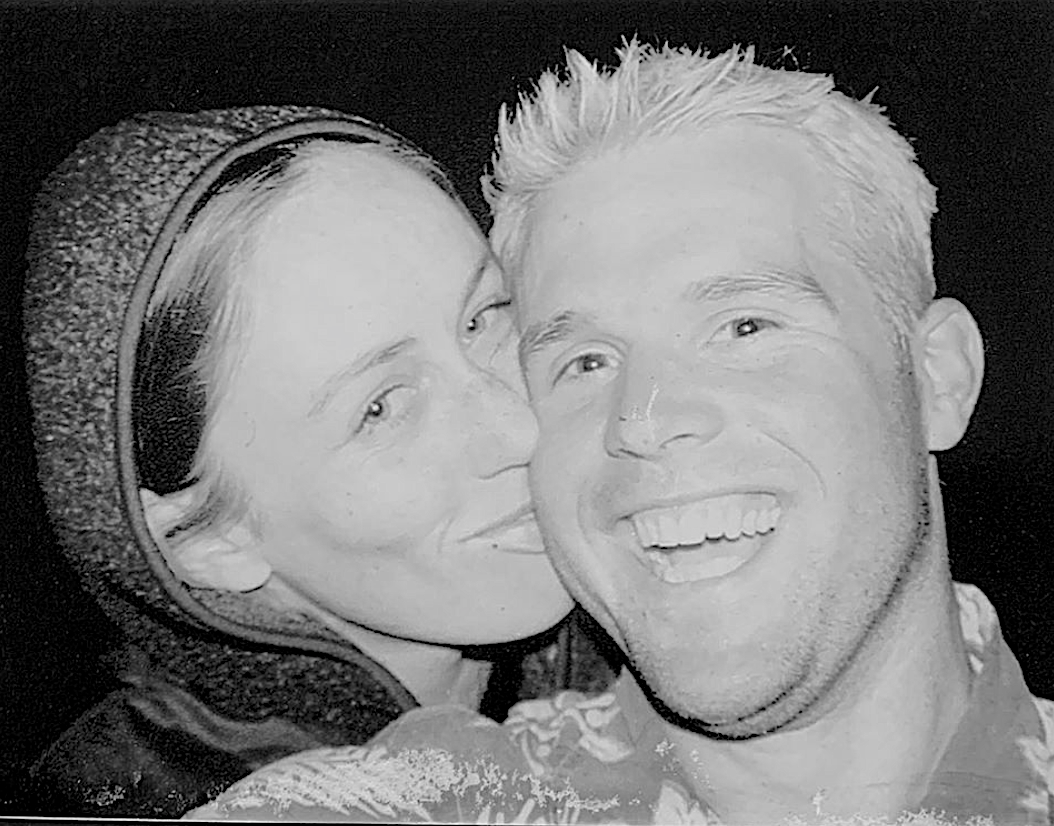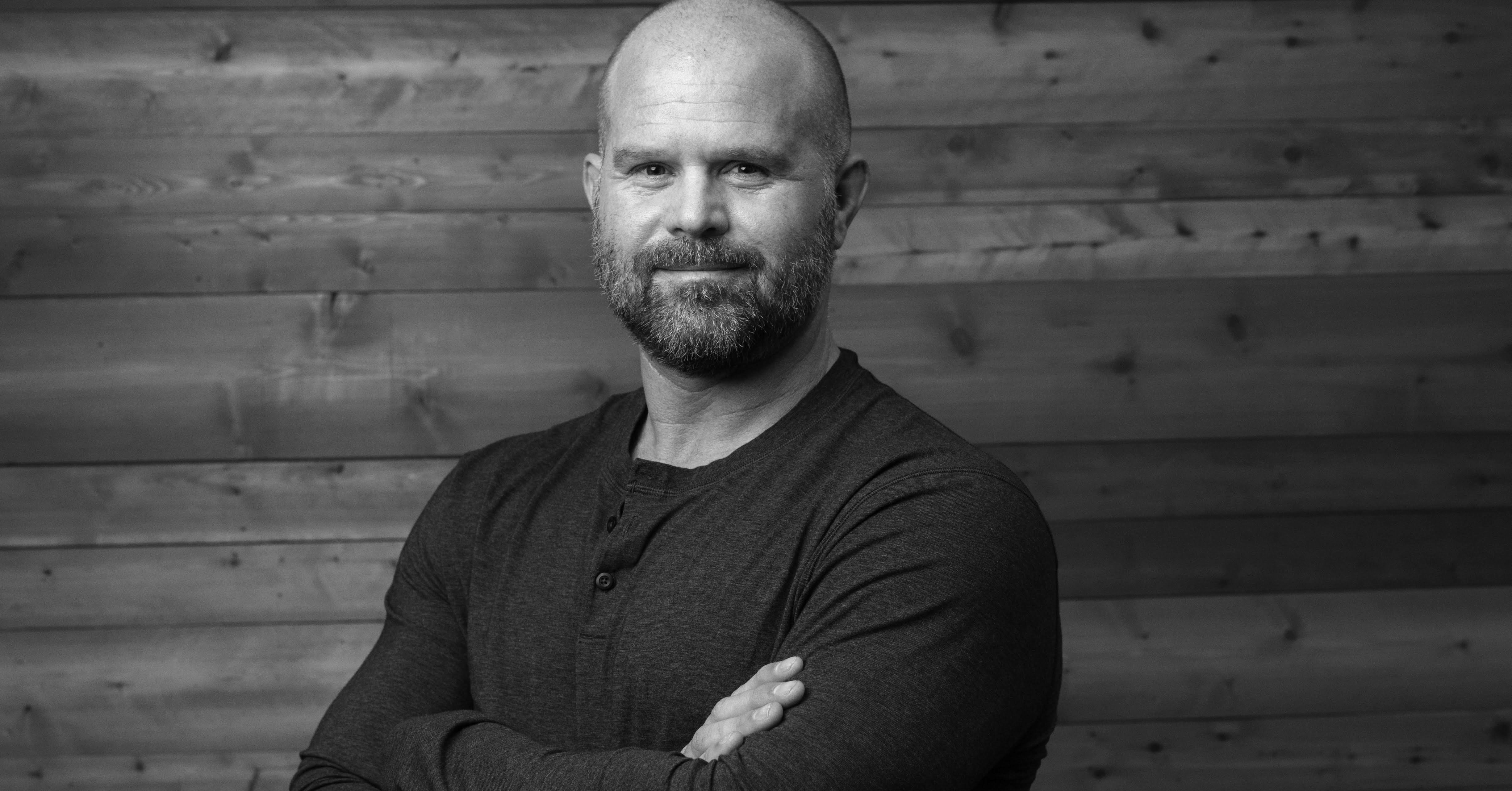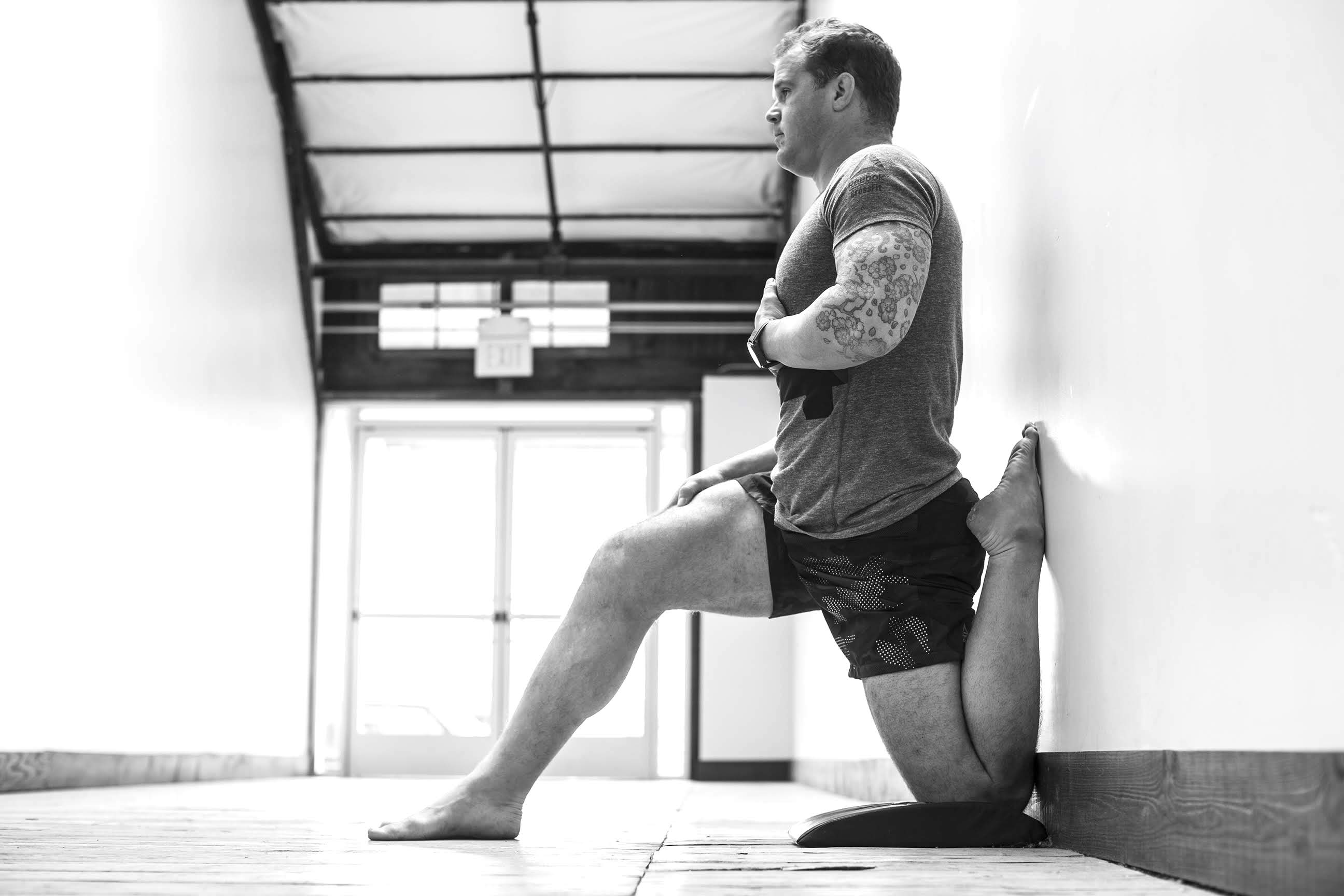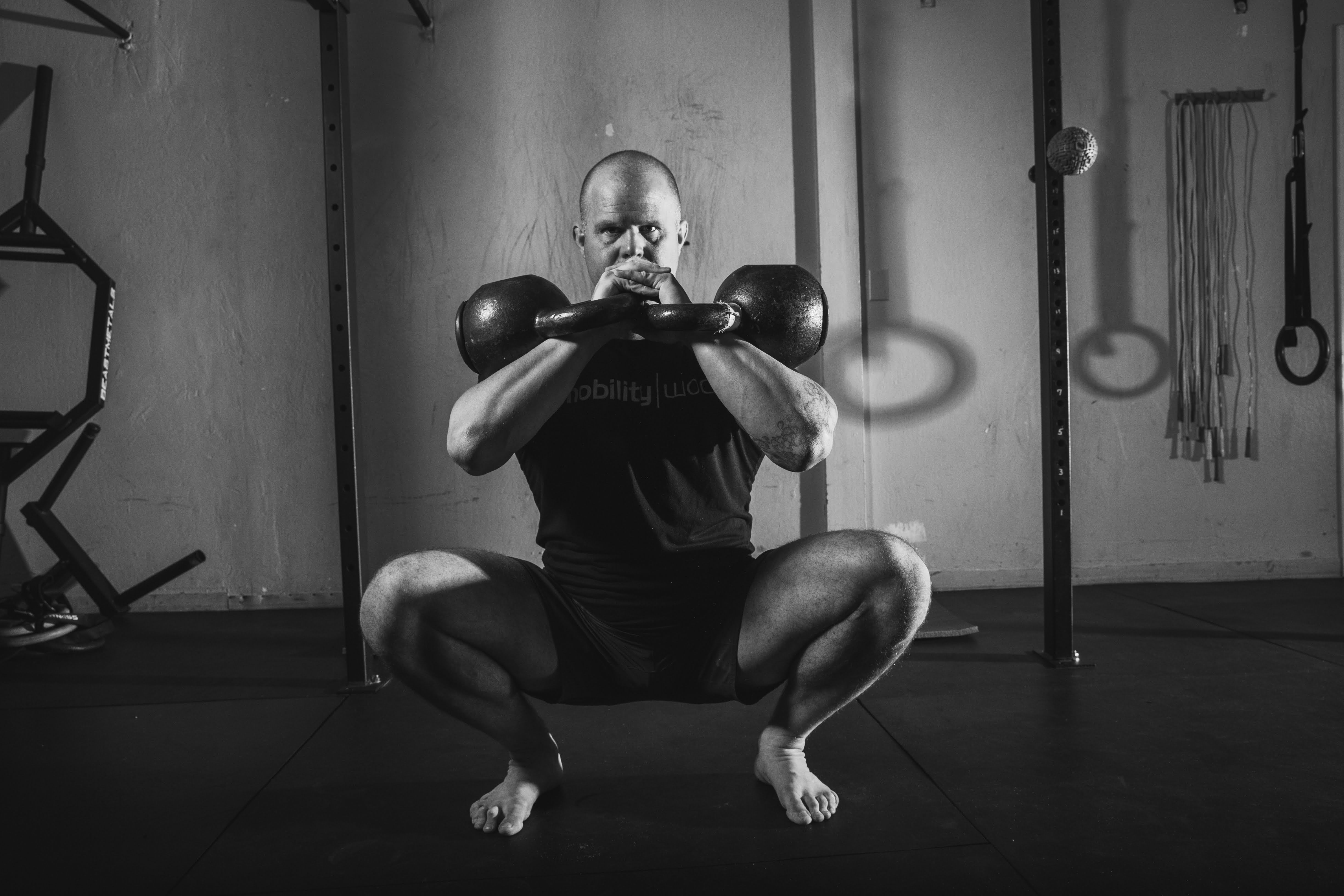“As I approach 50 years old, rucking is one of the keystone behaviors in my success for being 110 and kicking your ass when I’m 110.”
Dr. Kelly Starrett is a world-renowned physical therapist and coach, and an expert in the field of human performance, author of several books, including Supple Leopard, and the co-founder of The Ready State with his wife Juliet. Kelly recently joined us on the Glorious Professionals podcast for Episode 026 where he discusses why he believes in rucking and talks about his background in human mechanics.
“You know one of the reasons I am so pro-rucking is that I don’t think everyone has the mechanics or the ability or the skill or the tolerance to learn how to run.”
Kelly grew up rucking or hiking as a boy in Southern Germany and later found his tribe in whitewater rafting, both proved to be experiences that opened him up to the capabilities of the human body and spirit.
“Fast forward where I caught the bubble of whitewater kayaking in the 90s and early 2000s and was fortunate enough to find a tribe and a community that valued the outdoors, that valued risk taking, that valued self-reliance, and it didn’t take a lot of money. We were really looking for something I think to break ourselves against, and that thing that we were trying to break ourselves against was our own fear.”
“So if I take all the things we learned in sports and performance, nutrition, and I say, “Well, let’s just turn it around and look at our society. How are we doing? Are we happier? Are we in less pain? Do we feel closer to people? Are we more disconnected?””
Kelly went on to challenge so many assumptions on human performance that he ended up changing the game entirely and for the better. He contends that everyone should be able to perform their own basic maintenance. At The Ready State, Kelly and his wife Juliet teach their clients to self-diagnose and learn how to release built-up tension from sitting all day when they get home.
“This idea that we wait around until we can’t occupy our role in society or in the tribe is the old model. I go and go and go and go, I take ibuprofen and hide the problem until I’m ripped out of my community and I’m forced to deal with this at a medical level. We think there’s a lot earlier intervention. So pain is a big deal, range of motion, these basics about restoring your native ability as a human being. Turns out that that is also the game if you want to improve your performance. The reason I get to work with the All Blacks and the Houston Rockets and the Houston Astros and the Nationals and choose a team, choose a group, choose an organization. When we give people better positions they have more choice and more movement output, which means I’m moving that ruck at less cost than you. That I am more efficient and have more movement choice and am running the whole system at a lower overall kind of operational cost, which means when I get there I can do two days, and three days, and four days, and five days better than you can and that has nothing to do with your training.”
But at its core, his message is focused on helping you be more ready. Ready for your next race. Ready for your next workout. Ready to run around with your kids. Ready for anything life throws your way.
Listen to the full podcast episode here.
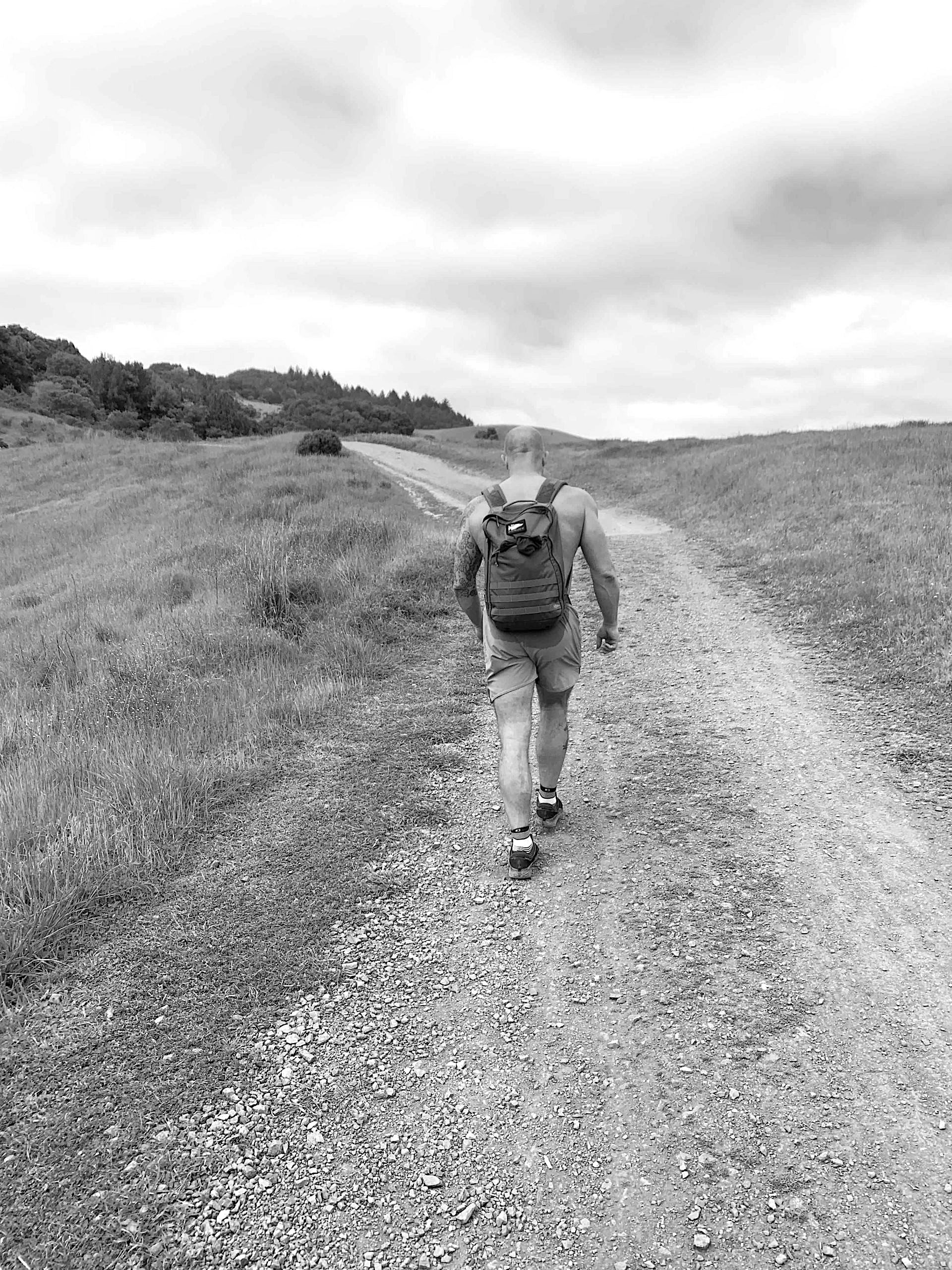
Read the full transcript of Glorious Professionals Episode 026 with Dr. Kelly Starrett:
Jason: Welcome to Glorious Professionals Episode 26, brought to you by GORUCK media. I’m Jason here with Rich. Our guest today is Dr. Kelly Starrett, a physical therapist and coach, and an expert in the field of human performance. He’s the author of several books, including Supple Leopard, and the co-founder of The Ready State with his wife Juliet. Bottom line, I’ve followed him for years. When he talks I listen and we’re really excited to get his take on rucking and overall how to be a healthier human being. Kelly, thanks for joining us.
Kelly: Super major pleasure as always my friend.
Jason: All right, so want to go back to the beginning to sort of how you formed a lot of what’s brought you to be the Supple Leopard and where you are now. I get the sense that growing up you were pushing the envelope from time to time, you were out trying to get after it in life. I know you grew up in Southern Germany. How was that like growing up a kid there?
Kelly: You always had a backpack, it was always loaded. Honestly, because I grew up… My civil working professor mom was always dating a mountain guide, it was a big ex-patriot community, that’s where the 10th Mountain Division trained. And so these guides would basically work with the military on simple mountain survival, mountain movement, things like that, and I discovered early on the weather was always changing, there was no cell phone, I had to be home at dark. Which meant in a single day I might ride my bike to Austria, I might hike in the mountains. We always had a go pack and it was not a big deal that every one of us had a pack with an umbrella in it, we had something warm on, we had a snack that lived in the bottom. We were just always ready to go.
Kelly: I’m really grateful for that 70s, 80s freedom of being able to run around wild, drink from the hose, give yourself heat stroke, recover in the shade, then do it again, and we did that a lot.
Jason: You mean you didn’t buy $2 eight ounce bottled water back then?
Kelly: There was less of that. I think I would have. I think what you really bring up in that moment is we are a product of our environment. What does our environment say about us? Right now we’re seeing that people’s systems aren’t really that robust, don’t know how to exercise, this is not their fault, they’ve never been taught. Don’t know how to eat, don’t know how to load, don’t know how to train our children. The question is really how do we reconcile all of this information about best practice right now because it’s an embarrassment of riches. But at the same time if we go back to E.O. Wilson, who is my ultimate hero. The father of evolutionary biology, the evolution of psychology says that the highest calling of science is to serve the humanities.
So if I take all the things we learned in sports and performance, nutrition, and I say, “Well let’s just turn it around and look at our society. How are we doing? Are we happier? Are we in less pain? Do we feel closer to people? Are we more disconnected?” Dude, we are failing in almost every measure. What’s going to change? We got to change something, it’s not working.
Jason: All right, so I want to really get into a lot of this. I also want to understand how you got to where you are now. You grew up with a single mom, right?
Kelly: Yep.
Jason: So did I. We talked about this a little bit. I did as well. My mom was 18 when she had me, and then you moved to America, you got an education, you got more education and more education on top of you’re sort of pushing the envelope of human performance at a young age. I mean a lot of time in the water, right?
Kelly: I discovered whitewater kayaking early on, when I was 12 years old. It’s another rite of passage. I was like, “All right, I guess I learn to kayak now.” Fast forward where I caught the bubble of whitewater kayaking in the 90s and early 2000s and was fortunate enough to find a tribe and a community that valued the outdoors, that valued risk taking, that valued self-reliance, and it didn’t take a lot of money. That was the other thing, we were all critically poor, but when we decided to go run a river it might be an overnight, it might be self-support. It was a 12 mile hike to do the shuttle. Maybe you hitchhiked and maybe you walked. We stuffed seven layer burritos from Taco Bell in the bottom of our bags because we knew they’d last 24 hours and they are the most calorically dense food we could get. We got really comfortable taking risk and relying on each other to have each other’s backs.
Jason: Yeah, so what was the dynamic of that tribe? This is huge for us because you get into Special Forces, it’s a tribe and some of that’s been lost as we fast forward to what we’re going to talk about in a bit. But I mean what was that like? I can feel what that feels like with you describing it.
Kelly: Yeah, let me give you an example. There’s a dyad right now of women who are heading to the Olympics. One in road bike, one in mountain bike. They’re both two of the nation’s best cyclists, world champions, world record, world cup champions, and I see them train together, Kate Courtney and Katie Hall. Both incredible local riders, some of the best athletes I know, and every time they compete together or train together I feel jealous, that’s what I feel. I know what it’s like to be on a mission with your friends and we went to the gym together, we carried stuff on our packs to get ready to carry stuff on our packs, we just all had this common bond about how much money do we have to get shared resources to get to the destination.
I drove a ’72 Ford Bronco, took me until my senior year in high school to save for that car. I used to take the bus to high school as a senior, it was really embarrassing to get on the… But that was my game, it took me forever. I worshiped this car, this car was freedom, and then we were gone in the mountains whenever we could. I went to university in Boulder and we were all river guides and kayak instructors in the summer and two things happened out of that. One is that we had pride in our work, we were the best guides out there. We were the most pro guides, the most experienced guides. Interesting in that is that we were responsible for a lot of civilian lives all the time, and the punners is what we called people, customers, “mers”. People would come with us for a two day adventure on some class V and I’m 20 years old, it’s fine, I’ll work it out. I mean what could go wrong?
To show up and to usher someone through that experience over and over again was really foundational. Then every free second we had off… Off the river at 6:00, on the river at 6:30 in PM, trying to get one more run in. Run a little class V, challenge ourselves. We were really looking for something I think to break ourselves against, and that thing that we were trying to break ourselves against was our own fear. And we did that repetitively for many years and we had some friends die and it was very, very serious and we took it as a calling. What’s really interesting is that when I moved away from Durango, where I was living when I met my wife Juliet, I moved to San Francisco. I thought I would never have that tribe again, that I would never have that comfort of communication, of being able to body read, of being able to rely on someone if I messed up. Just what it feels like, and lo and behold I have discovered that group of people again, it’s just a little bit different. But I mean I think that is one of the things that is absolutely missing from the human experience right now is that you’re in a group of people who have your back and you’re on a common cause.
Jason: All right, so let’s sort of… This is one of those lessons they taught my wife, which means that she teaches me, that’s how it works. It’s PTBUF, put the benefits up front, right. What’s most important to someone who wants to be healthy in your eyes? What are brilliance in the basics? What do people need to do?
Kelly: I think it’s so easy to get caught up in the minutiae. If I take this turmeric and I do this secret squat program everything is going to end up, I’ll win fitness. And I think if we view things through this lens of finite versus infinite gain. A finite game has clear winners and losers, clear rules, and it has a clear time domain. That’s how most of us approach the tasks at hand, whether it’s sport, business, life, family, we’re playing under those rules of this is a finite game. These games are infinite, which means that you don’t know the duration, you don’t know the rules, the rules are going to change, the players are going to change, and the only way you can be successful in an infinite game is to play better than you did yesterday and to keep everyone else in play. Come back to that thing how do you know when you’ve won fitness, when you’ve got the perfect abs for Instagram for one second and then you ate a pizza and it’s gone or you get injured because you’re actually using your body for something and you have to rebuild. So you can’t win fitness. Do you win relationships? I mean you’re married, I’m married, I don’t know if you’re married Rich, but
Rich: I am.
Kelly: I definitely won a few years ago and then haven’t won ever since. You can’t approach your relationship that way, business is the same and what we see is if we run everything through that filter of this is a game to be played and won, we’ll always be unhappy and we’ll never feel like there’s process or progress in the process. And so if we have to paint it back for a second and say, “What is the goal?” The goal for us is to make it to 110 years old with as much physical capacity and as much option and movement choice as we can. Some of us we have injury histories, we had jobs that took something away from us, but if we’re being honest, the first things come back into the basics, which is you’ve got to move your body everyday. Do you feel safe? Do you have a tribe of people? Do you feel connected to other human beings? Do you sleep, yes or no? I don’t believe you that you sleep, I think it’s all horseshit, I think that you’re not sleeping.
Now I have to be like okay show me your sleep numbers and then we can talk about it. Do you eat whole foods? We’re arguing about how many grams of protein you need versus the fact that you aren’t even eating things that your grandparents would identify as food. Then start to layer in the fact that you don’t use your body in the way it is, you’re not loading, and all of a sudden I can’t even tell what the output is because there’s so much noise in the system. First things first are to take care of those unsexy basics and then add things back in, and I think that’s… We’re in this life removing things either. We deprive ourselves or we are making so many checklists of stuff we got to do that we don’t experience it, we don’t understand that if you take care of the first principles, the first foundations, then you’re going to have choice and you’ll be able to play a much better game.
So if I ask people, “What is your fitness goal?” They’re like, “I don’t know, look good naked.” I’m like, “Well that’s a reasonable goal but really doesn’t get us very far because I can calorie restrict you and whatever we want to get you there.” But really when you nailed it, occupy your role in society. What is it you want to do? How do you relate in your community? How do we make you feel better? Our hypothesis is that most of us don’t feel as good as we realize we can feel. We’re not doing what we’re capable of doing, and we’re just leading demi lives, we’re just blundering through. That’s crappy, you’re a human being.
Jason: All right, so what’s the most foundation… I mean just the basics? Community, movement, add some weight to it?
Kelly: I spend a lot of time talking about pain and I spend a lot of time about the fact that you can’t do what your body’s supposed to do. Those two things. Your car’s supposed to be able to turn left, your car doesn’t turn left. You can still drive it and keep turning to the right and you can back up and go forward and turn to the right, just like one of those old remote control cars from the 70s, but your car should turn left and right. What are we talking about? Why are you arguing with me that your ankles aren’t ankles anymore? What are we talking about? Why aren’t you caring about that? Well you don’t care because it’s not limiting you or you’re not realizing the implications on that. To get to the bottom of that the first thing I would say, the dyad of you’ve got to walk everyday & you’ve got to move your body some everyday, Juliet and I really have come to believe that 10,000 to 12,000 steps is the goal. Some days you’re only going to get six, that’s fine.
We’ve been at elite military groups that they solve sleep problems. I don’t think people realize how interconnected the system is. I think this is one of the problems is that you get a bad night sleep or you run an Ambien and Adderall, and you can’t fall asleep so at 4:00 you have a massive caffeine bolus and maybe you sneak an espresso at 6:00 and then you’re ready to go to bed and you can’t hit the breaks because you haven’t moved enough and you’re a little sleepy so you hit some alcohol or whatever you’re doing to down regulate or THC or whatever it is. No judgments, just you trying to self-sooth. You have a crappy night’s sleep and the next day you’re even worse off. We get caught in this cycling. In the military it’s Ambien and Adderall, in professional sports its Ambien and Adderall. For most people it’s alcohol and caffeine. Whatever your combination is, what we fail to appreciate is that man, if I have caffeine after 4:00 I’ll sleep, I won’t sleep as well. That means the next day I haven’t adapted, I haven’t recovered, I’m not ready to go after it again and I’m a little sleepier and I get caught in this cycle.
Kirk Parsley said recently that the average sleep for the American two years ago was 6.4 hours. Last year it was 6.2 hours. We consider anything under seven hours of sleep a night is threshold for survival, that’s threshold. I know people are always like, “Bill Clinton only slept four hours a night.” I’m like, “Bill Clinton [almost] died of a heart attack.” What was your question again? I know you can do it, I know the guy on your left he went for years without actually sleeping and he has no hair and now he regrets it. But the point is that if you’re serious about playing this long game, you will prioritize eight hours of sleep every night. You will make it your core mission to get eight hours of sleep, which means you may need to be in bed nine hours. Now, what you’re saying is I have a job, I have newborn kids, I am screwed. I’m like, “Yeah that’s right. So you can’t control it so you’re going to control what you can control and get that eight hours when you can.”
Second, you got to walk. Those are the two things that I think are non-negotiable everyday. You got to move your body and part of the walking idea is that you’ve got to accumulate enough non-exercise activity, enough sleep pressure that you actually want to go to sleep. If you don’t move your body, and a one hour intense exercise session is not the same thing as moving your body all day long, then you’re not going to fall asleep, you’re not going to stay asleep, you’re going to sleep like crap. We failed to appreciate that those two things are linked. Sleep is a huge deal, you got to move your body, those two things are the core thing. However you want to eat, knock yourself out, making sure that it rhymes with whole food. Then we can talk about what’s next.
Jason: So let’s take it up a notch just for whether it’s myself, the GORUCK community, little insider ball here. Let’s say that a lot of us feel pretty good about our community, we got our tribe down. Let’s assume that sleep’s okay, maybe a little stressed out lately but sleep’s okay. Let’s assume we have big goals, we take on 12, 24 hour events. Let’s assume our step counts are good, 10,000 and above, eight to 12, take your pick. Some of those miles are with a ruck on, some are without. As we push ourselves more, say we load even more and more and more, what are the things that ruckers specifically should look out for in terms of tightness or… How would you craft that response?
Kelly: Remember the first thing that happens when you put in a stimulus is that there’s an adaptation response. This is why we exercise. We have the stimulus that disrupts homeostasis and our body is anti-fragile and reacts to it and we have a better body, a better brain afterwards. We have a learning response. That learning response may be I have changes in my efficiency, I have changes in my muscular power, I get stronger, etc., etc. But one of the things that we know is that after loading, we all using loading generically, could be squats, could be carrying, could be walking up a hill with carrying a pack, it doesn’t matter. The first thing your body does is not to make a muscle stronger, it makes the connective tissue structure stronger so that you start laying down some fiber that allows you to handle those loads. An anticipatory nature of the bigger, stronger system. The structure becomes stiffer as a byproduct, which is normal. But what we see is there’s never a happier sound than a packhorse being let off from its load, well the same thing is true of the human being. If I finish a big 15 pound ruck, boom, take the backpack off I’m free. Give me that beer.
Jason: The rucksack flop it’s called where we come from. You go through a long iteration and you just sit back and you lean against your ruck and then you open up your MRE. That is a slice of heaven right there.
Kelly: It’s a poor heaven but it’s a kind of heaven. It’s true, it’s true, it’s as good as anything else in the world that.
Jason: Judge not Kelly, judge not.
Kelly: Dude, I feel you, I feel you. Carrying my kayak over the rocks for 12 hours so I can get to the sleep spot. I have a glimpse of how gnarly it is. But what I’ll tell you is what do you do now to get the machine ready for the next day? This is where we have an opportunity. I just spent X number of time on my feet. What was stiff, what was tight? The body doesn’t do that many things, so now what we realize is that if you can just get 10 or 15 minutes of preventative maintenance as part of this cycle, we have found that to be sufficient to really improve the function of the person.
Jason: All right, so talk to us about The Ready State and how you all approach mobility, wellness, functional fitness, all these buzz words. Half of them you’ve kind of created or popularized. So talk to us about what you Juliet are doing out there in the great State of California to the world.
Kelly: Well, let me apologize for the word “mobility”, that is definitely my fault. And no one was using that word before and now it’s ubiquitous and a poor surrogate for even stretching or flexibility, wouldn’t even know what it means. I just saw an Ensure commercial that had Ensure Mobility and I was like, “I’m sorry, that’s my fault, that’s on me.” I saw, when I started this process 10 years ago officially making content, was people didn’t understand the basics for how their body worked and also they didn’t have a rubric or schema to make themselves feel better, i.e. reduce their pain, change their pain, desensitize their painful areas, or restore their positional mechanics. And wrapped in there was also that people didn’t know how to get the most out of their exercise buck. How do I maximize this adaptation response? Because if you and I both go ruck 10 miles but you have an 80% response from that and I have a 40% response from that, you can imagine how you’re going to get better and better and better over time and I’m wondering why I don’t make progress. This is why I had to care about sleep and I had to care about movement and I had to care about stress and down regulation, because what I found was that we weren’t able to take as big a bite of the apple after these training stimuli all the time.
If you go to our site you can see that, first of all, the idea is – it’s open ended, The Ready State. Well, what do you want to get ready for? What’s important to you? In there, we’ve done three things. One, you may come become because you’re in pain and that is the top priority right now, let’s get you out of pain, let’s help you manage this and give you some tools to appreciate that one, pain does not mean tissue trauma or tissue injury necessarily. Definitely does not necessarily mean tissue damage. When you have knee rabies or there’s a bone sticking out of your leg it’s pretty obvious something’s going on, the rest of it may be less obvious and there’s a whole lot of things you can do without ever seeing a physical therapist, a chiro, or a physician.
We’ve got a whole bunch of pain management, which is your gain. We really made this conscious effort, and this is crucial to this community, is that pain is just information. One of our friends, his company is Stop Chasing Pain. He says, “Pain is information and it’s a request for change.” I think when you start appreciating that and you’ll know, I want you to carry the ruck like this for a while on your shoulder, and what you’ll see is after a while it’s uncomfortable, right? That’s a request for change, so you shift it over here. Then after a while you carry it here and then you carry it here and then you shift the loads up, you move the pack down. All of those little discomforts is information about hey, you should change up this position of this load. That’s no different than my knee’s a little bit sore, my back’s a little bit achy. That could be an adaptation error or it’s a request for let’s restore your motion or you have some stiffness here or congestion that you can manage.
This idea that we wait around until we can’t occupy our role in society or in the tribe is the old model. I go and go and go and go, I take ibuprofen and hide the problem until I’m ripped out of my community and I’m forced to deal with this at a medical level. We think there’s a lot earlier intervention. So pain is a big deal, range of motion, these basics about restoring your native ability as a human being. Turns out that that is also the game if you want to improve your performance. The reason I get to work with the All Blacks and the Houston Rockets and the Houston Astros and the Nationals and choose a team, choose a group, choose an organization. When we give people better positions they have more choice and more movement output, which means I’m moving that ruck at less cost than you. That I am more efficient and have more movement choice and am running the whole system at a lower overall kind of operational cost, which means when I get there I can do two days, and three days, and four days, and five days better than you can and that has nothing to do with your training.
We’re looking about efficiency. Then the last one is really hey, I’ve just put my body under some stress, how am I going to speed up and maximize its natural adaptation response and improving things like down regulation and restoring your ability to slide and glide and moving fluids through your body. That’s the name of the game, so that seems all complicated, but you’d be like pain, recover, range of motion. Boom, boom, boom. Really the idea of The Ready State is what’s important to you? I want to get up out of bed without back, I want to be able to play with my kids, that’s it. I want to be able to go carry this 30 pound plate 50 miles. That’s a little weird but if that’s important to you, that’s important to me. That’s what I care about.
Jason: Thanks Kelly.
Kelly: You got it. I carry a 50 pound pack around and I curse your name all the time, it’s so great.
Jason: So the way I’ve thought about it, my sort of physical journey was a lot of trying to figure out how to really push myself, get a little stupid, back off a little bit, not get permanently injured, keep pushing because it was…
Kelly: Yeah, 100%.
Jason: …you have to do this or else you’re off the team, so to say.
Kelly: That’s right.
Jason: So you keep pushing. Now as you get older and – Rich is chuckling I’m sure at me right now – greater range of motion, more circulation, faster recovery. You learn these tricks. It’s not a silver bullet because those don’t really exist, it’s just a more holistic way to live when you want to perform at whatever tip of the spear that you’re on or you’re chasing. You and your teachings have been important.
Kelly: And that’s really it. I don’t want you to have to take things off the table and we start to do that. Look, our movement choice lives get smaller and smaller and smaller and smaller, and this is crazy. An excellent predictor of your mortality and morbidity is your ability to get up off the ground without using your hands. So sit cross legged on the ground, stand up. Want to find out how likely you are to fall or break a hip when you’re 70, which is the number one way to die is to break a hip when you’re 70. Right, because you end up getting pneumonia and you end up with a nosocomial infection in the hospital. I mean you lose your reserve. I want you to keep as much reserve and as much bone density, muscle mass, movement options you can, exactly what you’re saying and it’s much easier if we tell the young kids this is how you run the hottest and go the fastest.
It turns out those are the same principles and behaviors that we say to our old aged leopards who are saying, “Hey look, I want you to have less pain and still be able to go hard in the paint when it’s time to go hard in the paint.” Those behaviors they don’t change, and it’s much harder to tell an invisible 20 year old that she should keep an eye on her ankle range of motion and not eat that pizza than it is the 45 year old woman who’s like, “Whoa, what was that you’re saying again because my knees hurt all the time and I’m over that.” I’d much rather work with the older Special Forces guys because they’re like, “Hey, tell me about that back thing again. I wasn’t listening when I was 20.”
Rich: I’ve been listening very carefully. One of the concerns I have Kelly, and Jason mentioned it earlier, it seems like our entire society except for a small group of people, are looking for the silver bullet. There’s got to be a silver bullet here that I can take, that I can ingest, that I can do, whatever, that’s going to be the panacea, it’s going to answer all of my problems as opposed to learn yourself, take care of yourself basically, and then get out there and do the work.
Kelly: Yeah, what’s interesting about the GORUCK Challenges that you guys put and these community events is that it’s almost like we’re looking for it. We need it. People don’t even know they need it until they have a taste of it.
Jason: Fight club.
Rich: Yeah.
Kelly: Dude, right be a little bit scared. You know one of the reasons I’m so pro-rucking is that I don’t think everyone has the mechanics or the ability or the skill or the tolerance to learn how to run. Should you be able to run? Yeah, your whole life. Of course, that is a skill that makes us humans beings.
You want to know why you have a heel cord? Because it returns 80% of the energy you put into it when you run. That running and eight minute mile and a 10 minute mile, they turn out to be metabolically the same cost, that every child runs it the same way like Usain Bolt at over 90 foot strikes a minute on the right foot. There are some universals. This guys Frans Bosch says, “There is less variance and differentiation in sprinting and there’s more variance in waltzing. There’s more kinds of waltzing than there is sprinting.”
This high intensity exercise, these loads that come a lot…These loaded fast movements become a lot less tolerant of incomplete mechanics. You know what is the most stable ability in the whole universe? Walking, because that is the reason we have nervous systems in the first place. To feed ourselves, to mate, to reproduce, to run away and protect ourselves, that locomotion is the gain. We have nervous systems so we can perceive change in the environment and that is drilled on walking. We decongest our bodies through walking. I think that the easiest way to scale that up without having to walk faster is to walk heavier, so as soon as you put a backpack on I’m going to challenge your plantar facia in a way that can’t be challenged any other way. I can easily put a one pound plate in your back and I can put a two… I can scale this up and scale it up and scale it up until you’re carrying horrendous loads short distances.
What’s amazing is that it takes very little skill and it is very, very stable and very, very safe, and the benefits I… Do you remember the osteoporosis boom of the 90s? Every woman is osteoporotic and there were 10,000 caramel chews with calcium. That was suddenly like my mom was pounding calcium chews. Remember that?
Then we were like, “Ugh it didn’t work, oops.” It turns out it’s not about calcium, it’s about having your bones ask for the calcium.
Jason: Yeah, that and SnackWell’s didn’t work out, remember that?
Kelly: Yeah, well did they? I don’t know. SnackWell’s are pretty amazing. If you eat 10 of them and a cup of coffee I mean that’s pretty amazing. But the point is, man if I just put a backpack on you and walking around, I’m going to take care of all your bone density needs. I’m going to take care of you disc needs, I’m going to take care of your challenged balance needs. I’m going to make sure…There’s a Russian saying, “You’re as old as your feet.” You want to see weak ass feet? Well, you can’t have weak ass feet and carry a backpack around, it just doesn’t work.
So all of a sudden we constrain the environment to have a better outcome, that’s how important carrying resources is to your ability to be a great human being. It costs nothing. Want to get a fancy GORUCK bag and be cool? Those are my backpacks, those are the backpacks I carry, those are the backpacks I travel with, that’s what I load.
But I’m telling you, you have a shopping bag and a bunch of groceries that you can start carrying today. I think it’s that simple and I want to get this message out. As I approach 50 years old, rucking is one of the keystone behaviors in my success for being 110 and kicking your ass when I’m 110.
Rich: Well, you know, Kelly, it’s interesting because I’ve been around the world to a lot of places, Southeast Asia, Central America, South America, the Middle East. I’ve watched the natives ruck. Now they don’t call it rucking, they call it work. They put a woven basket on their back with a couple of straps and they put bricks in it or they put wheat in it, whatever the commodity may be, and they walk with it. They walk over mountains, they walk across plains, and it’s just their normal daily existence. They’re not doing it for exercise, they’re doing it for life because it’s required to do so that they can make a living and do whatever they need to do in their tribe, in their area. But it’s the same exact thing, it’s carrying heavy weights on their back, traveling for great distances.
Kelly: One of my besties is a guy named Rodney Hines. He’s an old specialized bikes super ninja, and he keeps his GORUCK bags as everyday bag, but he always keeps it loaded with 20 or 30 pounds and it’s always there. So no matter what, even on days where he’s working hard or can’t get out, he still had to lift it off the ground, put it on his back, manage…I had a DEA agent friend who used to…he always had this little black bag with him and I was always like, “What’s in the bag?” He’s like, “It’s a little bag of death, don’t worry about it.” He always talked about hiding the reps. He kept all the big guns in his trunk, and every time he got out of his car he would walk past the trunk, no matter what. Even if he had to go around the car to walk past his trunk, he would walk past his trunk. The reason is that he was training his brain when things went bad and he had to go get the guns out of the trunk, this is Miami DEA 80s, just think what that means.
He would suddenly be in a really sketchy situation and find himself at the trunk and he didn’t have to think about it. If you carry that heavy pack a little bit everyday your body will never have to think about that load. It shouldn’t surprise you when you put the pack on. Because unfortunately we live…or fortunately for us that we’re not carrying bricks and Coke bottles and doing all the things we need to carry, but it’s easy to sneak this load in a little bit over time and it’s Milo carrying the bowl, it really is that simple that if you just expose yourself regularly your body will adapt, and it is an adaptation machine. I’m with you.
One of our friends, Hamilton, was talking about a group of women that they looked at the disc heights on, these are women who carried large loads with their heads, they carried water. And their disc heights were immense because they loaded the joints axially, which is the safest, easiest way to load the spine. You want to challenge the spine? Bend over, pick up 400 pounds or move quickly. We’ve got a lot of sheer forces, a lot of things to manage, of course our bodies can do that. But straight up and down load is the safest, easiest, most tolerant load there is. These women’s discs got higher and stronger and higher because they’d been carrying their whole lives. They had loaded the tissues, the tissues got stronger.
Not only is this a panacea for just having strong bones and community and tribe, this is one of the first ways that I begin to challenge people who have back problems, who are, “Hey I don’t know where to begin to rebuild tolerance.” Well I get you straight up and down and I have you carry something. Well that sounds a lot like putting a backpack on.
Jason: Yeah, so there’s this idea that rucking hurts your back, sort of like how squatting hurts your back and walking hurts your feet. How do you feel about that?
Kelly: I don’t think the science bears that out. No don’t get me wrong, it hurts. I rucked a few times without a shirt on. I won’t do that again. You make that mistake one time. Oh it’s so hot. My wife’s like, “I don’t think you should take your shirt off.” I’m like, “I’m going to take my shirt off.” That was a mistake, but the key here is, just like so many things, it is our natural human tendencies to want to go big early. What I don’t think we appreciate is that our bodies always adapt a little bit at a time. What I would say, put five pounds in there and go walk a mile. That’s it, that’s your ruck, that’s your challenge this week. Three times a week and then pretty soon I want you to get the daily mile where you put five pounds in, then it’s 10 pounds, and then let’s add two miles and make it a 10 pounds in. If you give me a month of that I think at the end you’re going to be blown away at the capacity and the changes in your body.
We have a walking school bus we started. Kids walked a mile and a quarter to school. We had adults lose 30 pounds walking to school and back. They lost 30 pounds walking their kid a mile and a quarter to school and a mile and a quarter back. They were like, “This changed my life.” I was like, “Well what are you doing because I wouldn’t mind losing 30 pounds of fat. I mean that sounds awesome. All you did was walk a little bit?” So what I’m saying is it’s so easy to work this in and what you’ll see is that you can tolerate it because it is one of the things that we’re supposed to be able to do, carry loads through our spines. What I’ll tell you is that you don’t have to go to 50 pounds right away, and I wonder if you have full hip range of motion because now suddenly rucking is a wonderful diagnostic tool isn’t it? Hey, it turns out your quads are really stiff after this five mile downhill that you just did. Well I wonder if we have any technology lying around that can help us deal with those stiff quads?
I think what’s nice is that the ruck can be the core of your movement practice and then you can ask, “Well how much hinging do I need to do? How much pressing do I need to do? What are the other things I need to do around that?” Pretty soon rinse, wash, repeat and go talk to me in 10 years.
Jason: Awesome, all right. Last question is just a roundup. Any final advice or we’ll plug The Ready State. I’m a huge fan of everything you’re doing. I listened to another podcast you did a couple years ago. You were in London and you talked about what you really wanted was societal change. You wanted big change to happen and not just incremental, not just little, but the way that people think. I think that you’re a great ambassador for that and I’m proud to be…I feel like we’re on the same team like that, so it’s why I love chatting with you here.
Kelly: One of the things that I appreciate so much about GORUCK and its community is that it’s elegance and simplicity. It is so egalitarian, it is democratized, carrying something is free and easy and you can radically change your life. You want to lose 50 pounds? I know because I have given GORUCKs out to my friends who are trying to lose weight in our neighborhood. I’m like, “Hey look, I appreciate that your life is crazy, let’s load you up, let’s do this.” Always coming back to what is the minimum dose, what’s essential, how do we give your life back? That has really been the driving feature and I’ll tell you that what I’ve come to appreciate is that sometimes the breakneck pace is the glacial pace, that’s how long these things take.
I think the fallacy of being a typical modern human is we don’t think in terms of years or decades. It’s not how we’re wired, and we’re playing a game that ends in two years, we’re not playing a game that ends in 60 or 70 years. It’s really difficult for us sometimes to appreciate inputs and outputs, but I’m always trying to get back to what is the most simple change in behavior that is sustainable that gives you the biggest bang for the buck. And then do what you like. Dude if you’re like Peloton, yoga, rucking, I’m like, “Man, that’s pretty good, it’s going to be hard to beat that. I’d like you to press something over your head once in a while but you’re probably already in there.” I don’t care what the… I’m totally agnostic about the way, but I am interested for me in how do these things scale? And for me a lot of utility is lost in ideas and concepts that don’t deploy well or scale well across cohorts. There’s this fear that we were going to kill our kids with backpacks and I was like, “Seriously, have you…well your child because your child plays video games all day long.”
This is an easy sneaky way. I’m like, maybe we need to make kids’ backpacks heavier, not lighter. We need to start loading them up earlier, sneak a brick into there so that we have these robust kids. Don’t get me wrong, I see the kids are plenty unprepared to carry their crazy loads. Comma, we are really savage animals, we are savage human beings and I want us to look at not being heroic short-term but being consistent, and that really is the game is this consistency and finding things, behaviors that stick and are scalable and that’s the game. Juliet and I just got off the river, we just did a five day Klamath River trip. We’re still running rivers all these years later, and the number of awkward things I had to carry and lift in and out of the boat and squat on the ground and move and I was like, “Holy crap, this is my birthright and I’m so lucky at age 47 to be able to access all these positions and climbing in and out of the truck and lift the 300 pound raft here.”
It’s just the exposure – going to the bathroom requires an immense amount of dexterity that’s not on my flat surface life. I think one of the things that we can easily do is then shape our environment so we have a better outcome and carrying a heavier pack around is the easiest way to start to shape your environment.
Jason: Thanks for coming on Kelly. We love you, we’re big fans. You haven’t heard of Kelly or The Ready State then go check him out.
Kelly: I’ll also say, if you are like, “This kid’s a maniac, who is this guy?” One of the things that Juliet and I did through our site is we created a two-week on ramp program there, so we’ll scale you up a little bit at a time over two weeks. So if you sign up we’ll give you a crash course, this primer about how to take care of your body so that you know how to use the more advanced stuff. But if you just cancel after two weeks I think you’d be blown away at how much you learned. Then we’ve got challenges and all this… We’ve made it easy. We relaunched the site last year because it felt a little bit like it was the Library of Alexandria, it was a little crazy in there and we tried to streamline it down and make sense of 10 years of data, and it’s a little bit easier to use now. Jump in there. That way when your foot hurts, or your knee hurts, or you’re in the middle of something you’re not panicked, you know what to do, you know how to handle it.
Jason: Awesome, thanks for your time, Kelly.
Rich: It’s been a pleasure to listen to you because you’ve talked about a lot of things that are really important to me. Some of them on a personal basis, I’ll give you an idea real quick. I had 30 years in the Army. I did 2,500 parachute jumps, so when I checked out of the Army I figured, “Okay, I’m going to have a bunch of compression on my spine.” When they actually checked it, there was no compression whatsoever and I’d been carrying heavy rucks all my life and I’d never put that together until you started talking about it. I got into some yoga and ballroom dancing, so it’s like oh okay, geez, this is kind of a confirmation of all those things I’ve done.
Kelly: Well, the magic for us is to be able to not always have a genius who figures it out, but to say can we reverse engineer that so that we don’t miss opportunities or miss windows. Because you’ve nailed it, right?
Rich: Yeah.
Kelly: Now you’re focusing on hey I’ve got to keep an eye on this range of motion, got to make sure I can breath in these positions, and I’ve got to keep my balance up. There’s some really easy ways to do that. That’s amazing, I love it. My grandfather was a flight surgeon in Korea, my stepfather retired a Colonel, was an Army doctor, and then you’ll appreciate this because of what I understood you were Delta Force. That one of my friends, his name is Drew Contreras, he was Obama’s physical therapist. Came over from the Pentagon and now is with Biden. I’ve been working with Drew supporting his mission with the President. Now this is my second mission and if Biden wins I want to take all of this and aim it at elementary school and middle school.
Rich: That’s where it needs to start. That’s where the problem is right now.
Kelly: Yep.
Rich: They don’t even go out and do recess anymore for most of them.
Kelly: I know.
Rich: That really bothers me.
Kelly: It should. You know I think people don’t appreciate that President Kennedy started the Presidential Physical Fitness test because he saw a generation of people who couldn’t be deployed to war.
Rich: Exactly.
Kelly: Right now not only is this now an issue of national security, it’s also an issue of social justice. So we’ve got people’s attention.
Rich: Yeah.
Jason: Yeah you read his article, right? What is it? The Unfit American or something like that. It’s in Sports Illustrated. Kennedy wrote it after he was elected before he took office. I’ll send you the link or Google… The Soft American maybe. It’s a short read, and he issued the 50 mile challenge which we’ve picked up as well. We have a whole event on that called the Star Course, it’s the 50 miler.
Jason: In that guise, so we’re big fans of Kennedy. He’s also the guy that authorized the wear of the Green Beret. So Green Beret’s love JFK.
Rich: Yep.
Kelly: That’s great, I love it. Well I think these society problems, two-fold, we have to have a structural solution that is at scale. We need the government involved and we need communitarian approach where it is small groups of people inspiring other small groups of people so we have to work on both sides. You have to have the regular Army and you have to have the irregular Army.
Rich: Absolutely.
Kelly: So it goes.
Rich: One of our big pushes is building better communities. Because you build better communities by building better individuals.
Kelly: That’s right.
Rich: Better communities, ultimately build better nations. This nation needs some rebuilding in those areas.
Kelly: Yeah, the leadership starts with us. I really have liked, you know those guys at 30 Seconds Out. He had a t-shirt or a sticker that said no was coming, it’s up to us and that really stuck with me and I started talking about it’s up to us and now lots of shirts are out there and really I think that’s the key is that we have lost this agency and sort of the moral obligation to do the right thing, so it’s up to us.
Rich: You got it.
Jason: We’ll keep fighting the good fight. You do the same, brother.
Listen to the full conversation with Jason, Rich and Kelly on the Glorious Professionals website or via Apple Podcasts, Spotify, Google or Sticher.
